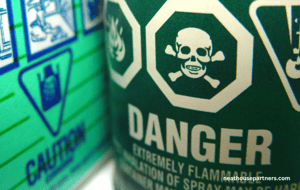The Building Safety Act - What is it all about?
The Building Safety Act - What is it all about?
James Rowland
Commercial Director James leads Account Management, Sales and Marketing at Neathouse Partners.Date
19 June 2023Updated
20 March 2024
Table of contents
Related articles
Tags
Laws such as the Building Safety Act play a pivotal role in ensuring the welfare of employees and creating a safer work environment.
In this article, we aim to help you to understand your responsibilities and guide you through the steps to meet the regulations effectively.
Understanding the Building Safety Act
The Building Safety Act represents a significant reform in building safety regulations in the UK, aimed at improving standards and accountability within the construction industry, with a strong focus on high-rise residential buildings.
As an employer, your responsibilities extend beyond the direct scope of your business operations to include the safety and well-being of your employees, particularly in the context of your premises.
Non-compliance with the Building Safety Act can lead to significant legal and financial implications, including fines and potential jail sentences in extreme cases.
Here are the key points about the Building Safety Act concerning employers:
- New Regulatory Bodies: The Act establishes three new bodies, including the Building Safety Regulator (BSR), the National Regulator of Construction Products (NRCP), and the New Homes Ombudsman. These bodies will oversee the safety and performance of all buildings, construction products regulatory regime, and address complaints about new-build homes respectively.
- Clear Accountability: Employers, particularly those functioning as duty holders such as Principal Designer or Principal Contractor, will have clear responsibilities during the design, construction, and completion stages of all buildings. They must manage building safety risks effectively. Non-compliance could result in criminal charges.
- Building Owners' Responsibilities: If you're a building owner, the Act holds you accountable for demonstrating that you have effective, proportionate measures in place to manage building safety risks in your buildings, especially higher-risk buildings. You're also required to contribute to the costs of fixing any safety issues in your building.
- New Protection Measures for Leaseholders: The Act ensures that building owners, not leaseholders, bear the cost of remediating historical building safety defects, including the removal or remediation of cladding. As an employer, if you lease a building, it's important to understand these protections.
- Resident Engagement: The Act ensures that residents in high-rise buildings have a greater say in their building's safety. As an employer, if you manage residential properties, you must pay heed to the concerns of residents and address them effectively.
- Construction Products: The Act strengthens the regulatory regime for construction products, ensuring their safety for the intended use. If your business involves the manufacturing or use of construction products, you need to adhere to these new requirements.
- New Developer Tax and Levy: The Act introduces a new tax and levy on developers to ensure they contribute to the costs of rectifying the building safety crisis.
Your Responsibilities Under the Act
Under the Building Safety Act, employers are designated as duty holders, responsible for mitigating risks and maintaining safety standards.
This involves:
- Conducting regular safety risk assessments.
- Ensuring that your building design and construction comply with the safety regulations.
- Maintaining accurate and up-to-date safety records.
- Implementing necessary safety measures in case of identified risks.
- Regularly informing and engaging with employees regarding safety measures and protocols.
Additionally, employers in the construction, property management, or housing sectors face additional implications.
- Duty to Register Buildings: If an employer owns or is responsible for the maintenance of a high-risk building, they must ensure it's registered as per the Act. This involves the employer or the appointed accountable person (AP) providing detailed information about the building and its safety measures.
- Compliance with Safety Regulations: Employers involved in the construction and management of buildings need to ensure they are complying with the Act's stringent safety regulations. This includes a thorough assessment of potential fire and structural hazards, developing a comprehensive safety case, and demonstrating that safety risks are being effectively managed.
- Developing a Reporting System: The AP must establish an effective mandatory occurrence reporting system, which needs to form an ongoing, regular part of the building safety risk management process. This system should capture safety occurrences and allow for them to be formally reported to the Building Safety Regulator.
- Resident Engagement Strategy: Employers responsible for high-risk residential buildings must develop and implement a resident engagement strategy. This involves providing residents with key building safety information and establishing a process to handle their complaints.
- Maintaining a 'Golden Thread' of Information: The AP is also responsible for maintaining an accurate, digital record of all building information and works carried out. This can involve a significant amount of data management and can impact the employer's IT and record-keeping processes.
- Potential Penalties for Non-Compliance: Employers need to be aware that failing to comply with the Act's provisions is a criminal offence, which could lead to fines and imprisonment.
In summary, the Building Safety Act has a broad impact on employers, especially those involved in the construction and maintenance of high-risk buildings.
By understanding and meeting these new requirements, employers can help ensure the safety of their buildings and those who live and work in them, while also complying with the law.
Steps to Achieving Compliance
Compliance with the Building Safety Act is an ongoing process rather than a one-time task.
Here are some steps to help you achieve this:
- Perform Risk Assessments: Regularly identify and mitigate all potential structural and fire hazards in your building.
- Consult Experts: Regularly engage with safety inspectors and legal advisors to ensure correct interpretation and implementation of the Act's requirements.
- Implement Safety Management System: Establish a system that includes regular safety checks, employee training, and emergency response procedures.
- Maintain Accurate Records: Keep up-to-date digital records of all safety-related information, which should be readily available for review and inspection.
- Communicate with Employees: Keep employees informed about safety measures, updates, and their own responsibilities.
- Engage with Residents: If residential, engage with occupants about safety measures, emergency response, and avenues for raising safety concerns.
- Stay Informed: Keep up-to-date with regulatory changes related to the Building Safety Act and adjust safety practices accordingly.
- Regularly Review Strategies: Ensure your strategies meet the Act's requirements and reflect changes in your operations by conducting regular reviews.
Further reading: The role of trade unions
Summary
Being proactive about safety compliance in line with important legislation like The Building Safety Act isn't just about avoiding penalties—it's a commitment to your employees' welfare and the success of your business.
We understand that navigating legal landscapes and ensuring compliance with new regulations can be challenging.
Our team here at Neathouse Partners specialise in Employment Law, Health & Safety, and HR Services to provide expert guidance to help you understand and meet your obligations under the Building Safety Act.
Our team can conduct comprehensive risk assessments, help implement a robust safety management system, train your staff on safety procedures, and provide ongoing advice to ensure your business remains compliant.
Call us on 01244 893776 for an informal chat about your needs today.
Related blog posts

Navigating Hand Issues in the Construction Industry: A Health & Safety Guide for Employers

The Importance Of Manufacturer's Instructions For Business
Have questions?
Get in touch today
Contact us, and our team will get back to you within 24 hours. We value your questions and are committed to getting them answered quickly.


Hello! I am Nicky
Just fill in the form below with your details, and I will arrange for a member of our team to give you a call.
By clicking, you agree to our Privacy Policy








